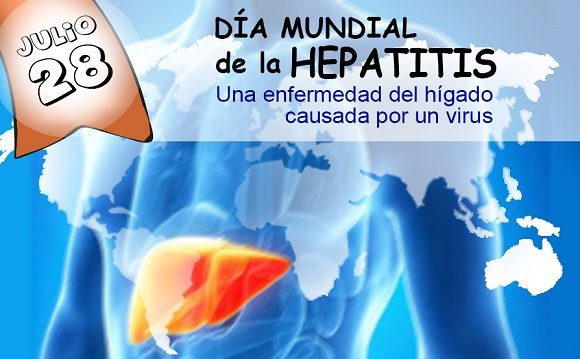
HAVANA, Cuba, Jul 28 (ACN) On World Hepatitis Day, Cuba is working to eliminate those caused by B and C viruses in line with the initiative launched by the Pan American Health Organization (PAHO) to put an end to more than 30 infectious diseases in the region by 2030, including viral hepatitis.
The international organization reports that every year in the region there are 10,000 new hepatitis B virus infections and 23,000 deaths; only 18 percent of people are diagnosed and of these, only three percent receive treatment.
Similarly, the most recent estimates by the World Health Organization indicate that in the Americas there are 67,000 new hepatitis C virus infections and 84,000 deaths each year; only 22 percent of people with chronic hepatitis C are diagnosed and of these, only 18 percent receive treatment.
Cuba has a National Strategic Plan for the prevention and control of STIs, HIV and hepatitis and is also working with PAHO to certify that mother-to-child transmission of hepatitis B has been eliminated.
Hepatitis refers to inflammation of the liver caused by various factors, the most frequent of which are associated with infections with viruses A, B, C, D and E, and can also be caused by drugs and alcohol, autoimmune diseases, metabolic disorders and infections by other viruses and bacteria.
PhD in Medical Sciences Mirtha Infante Velázquez, president of the Cuban Society of Gastroenterology, explained to the Cuban News Agency that the A and E viruses are responsible for epidemic acute hepatitis, transmitted through contaminated water or food, and in most cases patients recover without presenting sequelae and in a small percentage develop severe forms.
He expressed that virus A is transmitted at the moment of incubation and when symptoms appear the person is no longer capable of making others sick, hence the importance of maintaining hygienic measures at all times, mainly hand washing, food hygiene and not sharing personal items.
While viruses B, C and D cause both acute and chronic hepatitis, so that some patients evolve towards cirrhosis or liver cancer, being cirrhosis the ninth cause of death in the country and according to international reports the complications associated to this disease have increased mortality during the COVID-19 pandemic, she pointed out.
The also Senior Researcher and specialist of the Institute of Gastroenterology said that the B, C and D viruses are transmitted fundamentally through blood transfusions, medical instruments and contaminated personal use articles, from mother to child and through unprotected sexual relations, although these last routes are more efficient for the B virus.
However, in Cuba, transfusions have been analyzed for several years to ensure that the blood is safe and to avoid possible infections, she said.
The professor said that Cuba has its own vaccine against hepatitis B, Heberbiovac HB, the most relevant result of Cuban science in the specialty.
The drug, developed by the Center for Genetic Engineering and Biotechnology, recognized by the World Health Organization and part of the National Immunization Program, protects the entire population under 40 years of age.
Although many patients experience the disease asymptomatically, the gastroenterologist listed that they can manifest fatigue, general malaise, nausea, yellow skin pigmentation, dark urine and white or yellowish stools.
In some cases, he mentioned, hepatitis is identified from ultrasounds, through elevated liver tests or analysis due to causes unrelated to this condition.
Likewise, in all regions of the country there are laboratories to confirm the disease through PCR (Polymerase Chain Reaction) blood tests and diagnostic kits developed by the Immunoassay Center with SUMA technology.
Sidebar

 Agencia Cubana de Noticias
Líder en información nacional
Agencia Cubana de Noticias
Líder en información nacional








Nos reservamos el derecho de no publicar los comentario que incumplan con las normas de este sitio